Yellow carrots, photos, what varieties there are, features of cultivation and care
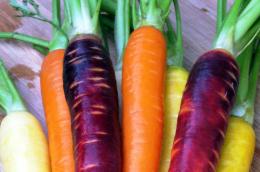
To consumers accustomed to the deep orange color of the vegetable, yellow carrots may seem strange. However, this does not mean at all that it is in some way inferior to its orange counterpart.
Content:
- What are yellow carrots?
- What it looks like in the photo, popular varieties
- How is it different from red
- Are yellow Uzbek carrots suitable for pilaf, use in cooking
- Where to buy yellow carrot seeds
- Features of sowing and care
- What is the benefit
- Who is contraindicated to eat
- Reviews from summer residents about the taste and yield of the plant
What are yellow carrots?
Apart from the rich yellow color of the root crop, this species differs little from the usual orange one.
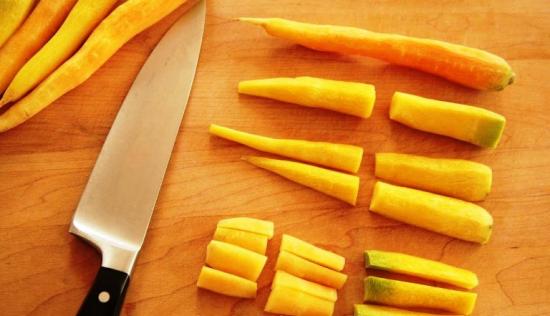
Characteristic features of carrots include:
- A bright green, not tall bunch of tops with dissected leaves, shaped like feathers;
- The rich yellow root crop has an elongated shape. This color is obtained as a result of the presence of the xanthophyll enzyme in the root crop;
- It differs from other types not only in color, but also in taste. It is sweeter and richer than orange varieties;
- The root vegetable is less juicy than the orange one and contains large amounts of lutein. This substance prevents the development of pathologies of the cardiovascular system.
As a product, this root vegetable is quite high in calories and requires a large amount of heat for normal growth and development. Therefore, growing such varieties in cold climates will be of little use.
What it looks like in the photo, popular varieties
In the photo, this plant differs little from orange except for color.
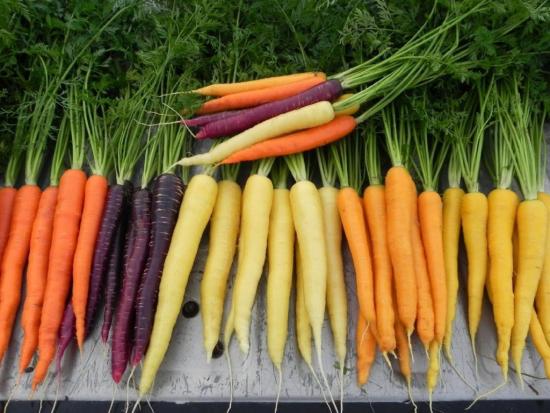
Among the most popular varieties there are three:
- Solar Yellow or Yellow Sun - the shape of the root crop resembles a spindle and reaches 19 centimeters in length. The fruits ripen completely within 90 days. Suitable for frying, canning and fresh consumption, but is poorly stored without processing;
- Yellowstone is an optimal variety for areas with loose soils and is resistant to many pathogens. The root crop is spindle-shaped, thin and long, can reach 23 centimeters. The variety is early ripening and has a rich harvest;
- Mirzoi 304 - the birthplace of this variety is Uzbekistan. Yellow root vegetables are distinguished by a slight green color at the base. The shape resembles a cylinder with a rounded end. Grows up to 15 cm in length and 3 cm in diameter. The average yield in warm regions reaches 6.5 kg per square meter. The closer to the north, the smaller the harvests will be. The variety germinates quickly and ripens within one hundred days. Mirzoi 304 is not suitable for long-term storage; it is used for fresh consumption and making juices.
All varieties grow best in warm conditions, where they produce the largest yield. However, even in more northern regions, a sufficient amount of carrots can be collected from one planting.
We invite you to watch an interesting video about yellow carrots:
How is it different from red
In addition to the fact that this type is less juicy than the red one, it also differs in chemical composition.
So yellow carrot contains such useful substances and vitamins as:
- Fluorine and calcium;
- Iron, sodium and iodine;
- Phosphorus and potassium;
- Zinc and magnesium;
- Vitamin complex: A, PP, B, C and others.
The calorie content of this fruit is 330 kcal/kg, so you should not consume too much of it. However, in moderation, yellow species will help prevent a number of diseases of the cardiovascular system.
Are yellow Uzbek carrots suitable for pilaf, use in cooking
Despite the unusual shade, in cooking this carrot used in the same way as its red counterpart. It can be eaten raw, simply cut into slices, or used as a seasoning for soups, broths and sauces. The only thing is that you can get less juice from this type than from red one.

Both red and yellow carrots are equally suitable for preparing pilaf. Ideally, there should be an equal number of them, and only this will allow you to prepare truly delicious pilaf.
In order for the broth with root vegetables to be as tasty as possible, it is recommended to pre-bake or fry it until golden brown. It is not only very tasty, but also aesthetically pleasing.
To preserve vitamins, the fruits can be melted in oil and added to dishes. Ideally, add this ingredient 15-20 minutes before the dishes are fully cooked.
Where to buy yellow carrot seeds
Despite the fact that these root vegetables are unusual for most, it is not such a unique and exotic vegetable that you have to look for it for a long time. You can even buy seeds at the market, although you will have to walk around.
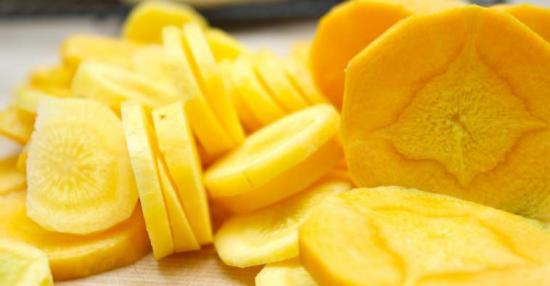
You can find seeds faster in online stores. However, in this case you should be extremely careful, as there is a danger of running into scammers. To avoid this, it is enough to place an order on sites where you have already made purchases or those that are listed first in the search results.
You can find seeds in any city, although you will have to run around a little. Although not rare, this plant is still not widespread enough.
Features of sowing and care
The process of growing yellow root crops follows the usual pattern, including preparation for sowing, sowing, care and harvesting.
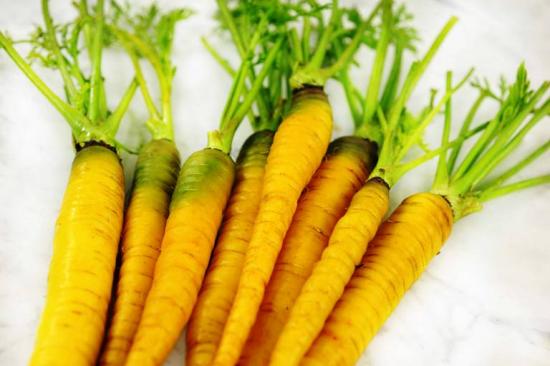
However, each of these stages has a number of features that it is recommended to pay attention to:
- Before you start planting, it is recommended to loosen the soil for carrots, if necessary, removing sprouted weeds;
- Check the seeds by pouring warm water. Those that float up are not suitable for landing. After checking, place the seeds in a cloth bag and immerse them first in warm water and then in cold water. This will help disinfect the planting material;
- Treatment with growth stimulants - a solution of potassium and manganese for 24 hours, after which it is recommended to rinse them in warm water and dry;
- Plant after the soil has warmed up to at least + 16 C;
- It is recommended to plant seeds in beds with a distance between them of 20 cm and intervals between seeds of 2 cm;
- Once the seeds are sown, it is imperative to provide sufficient water. At the same time, it is important to prevent waterlogging of the soil, watering no more often than once every three days;
- After watering, it is important to prevent the formation of a crust on the soil, which would prevent seed germination;
- Be sure to periodically carry out manual weeding or mulching;
- Harvest time depends on the characteristics of the planted variety. You can determine it by pulling out several roots and visually assessing them.
It is important to consider that only undamaged root vegetables can be stored for a long time, and the tops must be cut off from them. If this is not done, the vegetable may sprout again.
We invite you to learn all the secrets of properly growing carrots by watching the video:
What is the benefit
The main feature of this type of root crop is their ability to treat pathologies of the cardiovascular system. And this is not just the assumptions of home herbalists, but a fact proven by scientists from the Netherlands.
As a result of the experiment, scientists found that people who consume 25 g of yellow carrots daily are less likely to complain of cardiovascular diseases.
This property can be seen in all varieties of carrots, but it is the yellow ones that are most pronounced. Therefore, heart patients are recommended to include it in their diet.
Who is contraindicated to eat
However, despite all the advantages of this product, there are also a number of disadvantages. There are not so many of them, but they are still worth remembering so as not to get into an unpleasant situation.

First of all, it is important to consider that the daily value is 25 g of product. If this norm is systematically and greatly exceeded, there is a danger of oversaturation with beta-carotene. As a result, there is a risk of developing carotenemia with yellowing of the skin.
There is nothing wrong with this - a change in skin color is the only symptom of the pathology and to get rid of it, it is enough to completely exclude the product from the diet for several weeks.
In addition, it is not recommended to overuse carrots for people who:
- They smoke;
- Suffer from peptic ulcers and problems with the thyroid gland;
- Have diabetes;
- They suffer from allergies.
This does not mean that the product is completely contraindicated, but it is recommended to regulate its consumption.
Reviews from summer residents about the taste and yield of the plant
The yellow root vegetable is not as common as the orange one, however, it also managed to win the hearts of summer residents. Since caring for it is no different from caring for any other type of carrot, this cannot be difficult.
In reviews, summer residents often note the taste, which is characterized by more richness and high yield. A particularly large number of root vegetables are obtained in the southern regions.
There are not many particularly negative reviews. Most of them relate to personal preferences. So some people note that the vegetables are not juicy enough.
However, there are still more positive reviews, which only confirms the indicated positive qualities of the product.
Growing yellow carrots in garden beds will not take much time or much effort. Despite the fact that this product is still not widespread enough in the country, it no longer causes wild confusion and is finding more and more supporters.

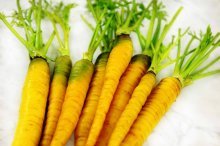

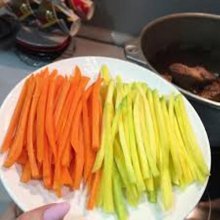


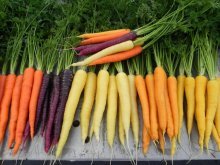
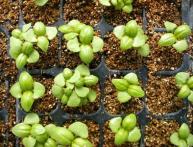
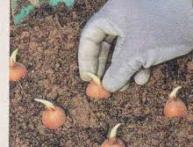
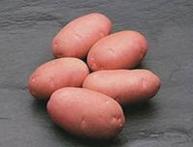
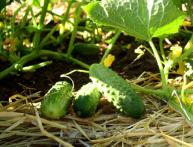
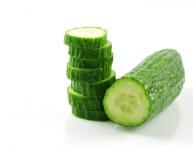
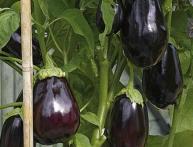
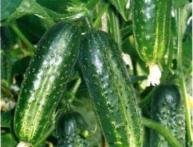
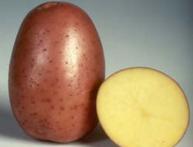
Comments
We always plant ordinary orange carrots before winter and the next year the harvest is excellent. Yellow carrots will have to be planted only in the spring, because they are less frost-resistant.
Everyone is accustomed to the orange variety; to be honest, I only saw yellow carrots at the market once, and somehow I never saw them again. At home we grew ordinary carrots, which can be seen every day.
I know that in addition to the usual orange carrots, there are white and yellow ones. However, when growing, I focus on the standard version, because the color of the root crop is not accidental, but is associated with the presence of beta-carotene in it.
I only grow traditional orange carrots; the other varieties I have tried give low yields. Perhaps the reason is not only the variety of root crop, but also that the land or climate is not suitable. I keep it in a dry cellar in sawdust or sand.